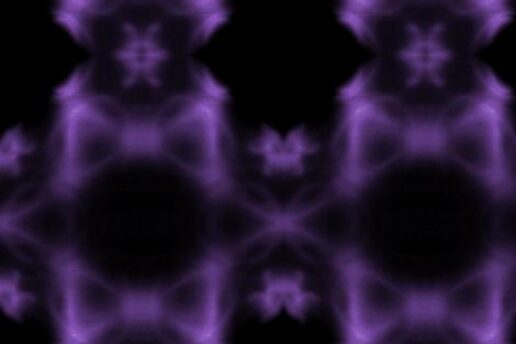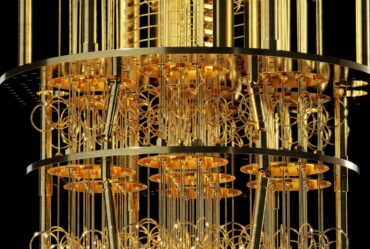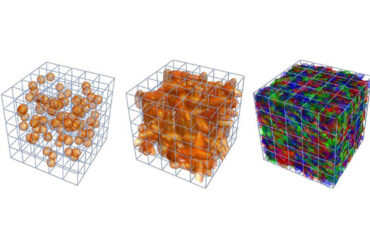
MIT researchers realize “ideal” kagome metal electronic structure
Newly synthesized compound of iron and tin atoms in 1-to-1 ratio displays unique behavior.
Since 2016, a team of MIT researchers consisting of graduate students Linda Ye and Min Gu Kang, associate professor of physics Joseph G. Checkelsky, and Class of 1947 Career Development Assistant Professor of Physics Riccardo Comin has focused on exploring the electronic structure that arises when atoms of iron (Fe) and tin (Sn) combine in repeating patterns that look like Japanese kagome baskets, or the Star of David. The electronic behavior of these crystalline “kagome” structures varies with the ratio of iron to tin atoms, usually 3-to-2 or 3-to-1.
Last year, the MIT team members and their colleagues reported that Fe3Sn2, a compound with a 3-to-2 ratio of iron to tin, generates Dirac fermions — a special kind of electronic state in which the spin of the electron and the orbit of the electron are coupled to each other. This special state of electron movement is protected by the topology, or geometric structure, of the crystal.
Iron-tin compounds are of particular interest because the natural magnetism of iron atoms further affects their electronic behavior, in particular causing the spins of neighboring electrons to alternate in opposite directions (clockwise or counterclockwise), which is called antiferromagnetism. In a report published Dec. 9 in Nature Materials, these researchers and 18 co-authors in the United States and elsewhere find that in a 1-to-1 iron-tin compound, the symmetry of the kagome lattice is special, simultaneously hosting both infinitely light massless particles (called Dirac fermions) and infinitely heavy particles (which manifest experimentally as flat bands in the electronic structure of the material).
“Our study combines various fields of physics (topology, magnetism, and strongly correlated electrons) in a single platform of ideal kagome metals,” says co-first author Min Gu Kang, a graduate student in physics. “We believe that harnessing the rich and unique electronic spectrum of FeSn could be the basis of novel topological phases and spintronic devices.”
Experimentally realizing this special electronic band structure was especially difficult because, in real kagome compounds, interference with an “ideal” lattice comes from electrons interacting between layers, electrons hopping to next-nearest-neighbor atoms, and each electron’s multiple orbital degrees of freedom. As recently as 2014, Professor Maria Roser Valenti of the Goethe University Frankfurt in Germany wrote in wrote in Nature Communications that such an ideal kagome band structure is “more a numerical curiosity of a simplified model than an accessible feature in real materials.”
One breakthrough in the current work was the synthesis of the 1-to-1 compound FeSn. The structure of this iron-tin compound differs from previously studied kagome compounds, because each iron-tin layer with a kagome structure is well-separated by a spacer layer consisting solely of tin atoms. In this structure, each iron-tin kagome layer behaves like a two-dimensional kagome layer within the three-dimensional kagome crystal, setting the stage to realize an ideal kagome band structure.
The researchers confirmed their findings on the electronic structure of 1-to-1 iron-tin by combining two complementary electronic structure probes: angle-resolved photoemission spectroscopy (ARPES) and de Haas-van Alphen quantum oscillation experiments. Graduate students Kang and Abraham L. Levitan in Riccardo Comin’s group carried out the ARPES experiments at the Advanced Light Source in Berkeley, California, and graduate student Linda Ye in Joe Checkelsky’s group performed de Haas-van Alphen quantum oscillation experiments at the National High Magnetic Field Laboratory in Tallahassee, Florida, and Los Alamos, New Mexico.
Their photon-energy and polarization-dependent ARPES experiments unambiguously demonstrate the simultaneous emergence of both Dirac fermions and flat bands near the Fermi energy, the researchers say. “This fully realizes the long-sought kagome electronic structures, and raises FeSn as the first ‘ideal’ kagome metal,” Kang says.
Because of the contrasting layers in 1-to-1 iron-tin — layers of iron and tin atoms structured in a “sheriff star-type” or “kagome” pattern alternating with layers of tin atoms only — the researchers discovered another unique aspect of this material. When the material is sliced through, the new surface revealed behaves differently whether it exposes a tin-only layer or an iron-tin layer. This differing surface electronic structure was confirmed by the micro-focused photon beam of the MAESTRO beamline at the Advanced Light Source. This combination of two-dimensional and three-dimensional electronic behaviors in a single material could be harnessed to engineer fast-switching/low-power spintronic devices, spin superconductors, and a high-temperature quantum anomalous Hall effect, the researchers say.
This work was supported, in part, by the Alfred P. Sloan Foundation, the Gordon and Betty Moore Foundation EPiQS Initiative, the U.S. Army Research Office, and the U.S. National Science Foundation.


